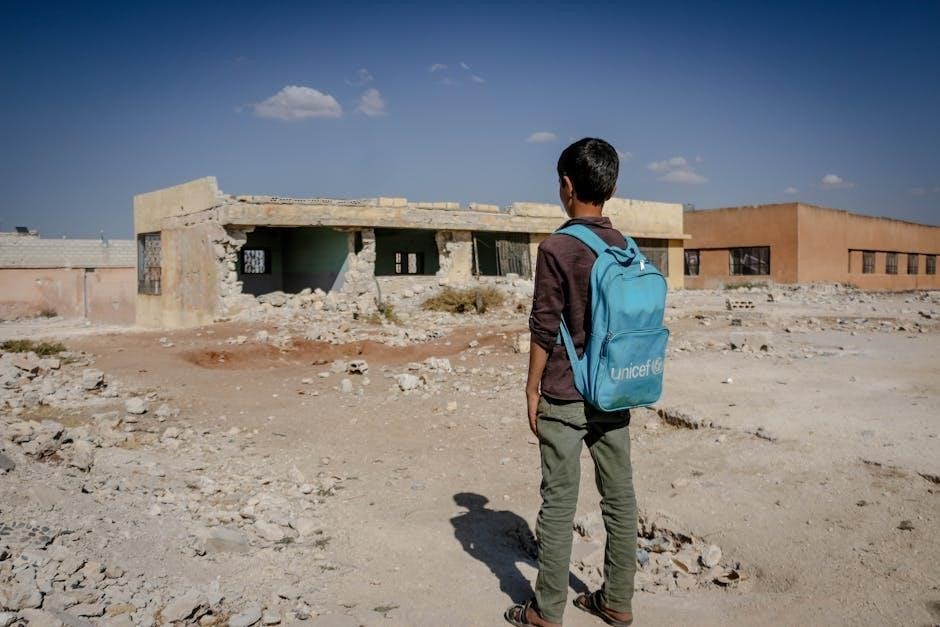
World War 1 Vocabulary Worksheet: An Overview
World War 1 vocabulary worksheets are vital for social studies, U.S. History, and world history. These resources enhance comprehension of complex topics like trench warfare and political ideologies. They serve as a review activity, homework assignment, or interactive classroom tool.
Importance of Vocabulary in Understanding World War 1
Comprehending key terms is essential for grasping the complexities of World War 1. A strong vocabulary allows students to analyze primary sources, understand historical contexts, and articulate informed opinions. Terms like “nationalism,” “militarism,” and “alliance” are fundamental to understanding the war’s causes. “Trench warfare” and “armistice” are crucial for understanding the conflict itself. Furthermore, understanding concepts like “propaganda” and the “Treaty of Versailles” helps students grasp the war’s long-term effects. Worksheets and activities that reinforce vocabulary, such as matching exercises and crossword puzzles, enhance students’ learning experience and solidify their grasp of this pivotal historical period.
Target Audience and Skill Level
World War 1 vocabulary worksheets cater to a diverse range of learners, typically spanning middle school to high school students. The complexity of the vocabulary and activities can be adjusted to suit different skill levels. Simpler worksheets with matching exercises are appropriate for younger or struggling learners. More advanced students can benefit from crossword puzzles without word banks or activities requiring them to define terms in their own words. The goal is to provide accessible resources that enhance understanding, regardless of the student’s prior knowledge. Answer keys ensure that educators can effectively assess comprehension and provide targeted support where needed, promoting inclusive learning.
Key Vocabulary Terms for World War 1
Military Terminology (e.g., Trench Warfare, Armistice, U-boat)
Essential World War 1 terms include military concepts like trench warfare, armistice, and U-boat. Political and ideological terms such as nationalism, propaganda, alliance, and isolationism are also key for understanding the conflict.
Military Terminology (e.g., Trench Warfare, Armistice, U-boat)
World War 1 military terminology is crucial for understanding the war’s physical and strategic aspects. Trench warfare, a dominant form of combat, involved complex systems of defensive ditches. An armistice signifies a formal cessation of fighting, often a precursor to a peace treaty. U-boats, or submarines, played a significant role in naval warfare, particularly for Germany. These terms, along with others such as “no man’s land,” “artillery barrage,” and “poison gas,” paint a vivid picture of the war’s brutal realities. Comprehending these terms aids in grasping military strategies and conditions.
Political and Ideological Terms (e.g., Nationalism, Propaganda, Alliance, Isolationism)
World War 1 was significantly shaped by political and ideological forces. Nationalism, an intense devotion to one’s nation, fueled rivalries and expansionist desires. Propaganda, used extensively by all sides, aimed to sway public opinion and demonize enemies. Alliances, such as the Triple Entente and Triple Alliance, entangled nations in a web of mutual defense agreements. Isolationism, a policy of non-involvement, was notably practiced by the U.S. initially. Understanding these terms provides insight into the motivations and justifications behind the war, revealing the complex interplay of politics and ideology.
Treaty of Versailles
The Treaty of Versailles, a crucial term in World War 1 studies, marked the formal end of the conflict. This agreement imposed harsh penalties on Germany, including territorial losses, disarmament, and hefty reparations. The treaty aimed to prevent future aggression but fostered resentment and economic instability in Germany. Its terms are a key element in understanding the war’s aftermath and the rise of extremist ideologies. Students must grasp the treaty’s significance, as it played a pivotal role in shaping the interwar period and contributing to the conditions that eventually led to World War 2.
Zimmerman Note
The Zimmerman Note is another critical term, representing a secret diplomatic communication during World War 1. This note, sent from Germany to Mexico, proposed a military alliance against the United States if the U.S. entered the war. In exchange, Germany promised to help Mexico recover territories lost in the Mexican-American War, such as Texas, New Mexico, and Arizona. The note’s interception and subsequent publication inflamed public opinion in the United States, contributing significantly to America’s decision to abandon its isolationist policy and join the Allied forces. Understanding the Zimmerman Note’s content and implications is vital for students.

Worksheet Activities and Answer Keys
Worksheet activities offer varied learning experiences. Matching exercises connect terms with definitions, and crossword puzzles reinforce vocabulary. Quizzes and spelling bees test retention, while puzzle-solving engages students. Answer keys are vital for self-assessment and teacher guidance.
Matching Exercises
Matching exercises are effective for reinforcing World War 1 vocabulary. These activities pair key terms with their definitions, aiding comprehension and retention. A simple matching worksheet can include terms like the Zimmerman Note, propaganda, and rationing, alongside definitions. The alliances and other essential concepts are also included.
Clearly worded definitions make the task accessible for all students. Matching enhances vocabulary mastery, serving as a review activity or homework. Answer keys provide immediate feedback, ensuring accurate learning and facilitating self-assessment. These exercises build a strong foundation for understanding World War 1.
Crossword Puzzles (with and without word banks)
Crossword puzzles are engaging tools for World War 1 vocabulary review. Including terms such as nationalism, propaganda, and the Treaty of Versailles, puzzles reinforce understanding. Versions with and without word banks cater to varied skill levels. Key terms also include militarism, armistice, U-boat, alliance, isolationism, and trench warfare.
These puzzles can be used as review activities, homework assignments, or in-class exercises. The crossword format encourages critical thinking and vocabulary retention. Answer keys ensure accurate learning and quick assessment. Word banks provide support for struggling learners, while versions without promote deeper recall.
Quizzes and Spelling Bees
Quizzes are valuable tools to test World War 1 vocabulary, assessing student comprehension of key terms and historical concepts. These assessments can be easily created and assigned to students, allowing teachers to monitor progress in real-time. Vocabulary Jams and Spelling Bees offer interactive ways to reinforce learning.
Spelling Bees enhance spelling skills while solidifying understanding of vocabulary related to World War 1. Students listen to the word definition and attempt to spell it correctly, promoting active engagement. These activities can be used for review, homework, or engaging classroom exercises, making learning effective and enjoyable.
Puzzle Solving
Puzzle solving is a fun and engaging method to review World War 1 vocabulary. Activities like matching puzzles, where students connect key ideas with their definitions, serve as excellent warm-up exercises. These puzzles can also be utilized for re-teaching opportunities, exit tickets, or review games, fostering active participation.
Crossword puzzles, with or without word banks, offer another interactive way to reinforce understanding of terms like nationalism, propaganda, and trench warfare. These puzzles challenge students to recall definitions and apply their knowledge in a stimulating format, enhancing retention and comprehension of World War 1 vocabulary.

Educational Resources and Tools
Vocabulary.com offers systematic vocabulary improvement for teachers and learners. Quizlet provides simple learning tools such as flashcards and games. Course Hero delivers instant access to study resources, aiding comprehensive learning and test preparation for students.
Vocabulary.com
Vocabulary.com serves as an excellent tool for both teachers and students aiming to enhance their vocabulary systematically. It offers personalized learning paths suitable for grades K-12. With features like Vocabulary Jams, students can compete to answer questions correctly, while Spelling Bees test their spelling skills.
Teachers can create and assign quizzes to assess students’ vocabulary knowledge and assign activities, including practice sessions, monitor progress in real-time, ensuring comprehensive vocabulary development. This platform helps to improve vocabulary, making it easier to understand complex topics related to World War I.
Quizlet and Flashcards
Quizlet provides simple learning tools, including flashcards, games, and expert-written solutions, to facilitate the study of various subjects. Students can use Quizlet to learn and memorize key World War 1 vocabulary terms. This platform offers an interactive and engaging way to study, making it easier to grasp complex concepts.
Flashcards are available for studying World History, allowing students to improve their grades through matching games, word search puzzles, and hangman activities. Quizlet‘s resources support comprehensive learning and retention, ensuring students are well-prepared for assessments on World War 1 vocabulary.
Course Hero
Course Hero offers instant access to millions of study resources, course notes, test prep materials, and 24/7 homework help. It also provides access to tutors and other learning tools to help students get unstuck. This platform helps students learn, teach, and study effectively.
With Course Hero, students can find valuable resources related to World War 1 vocabulary. These materials can supplement worksheet activities and provide a deeper understanding of key terms and concepts. The platform supports comprehensive learning, making it a valuable tool for both students and educators.

Utilizing Worksheets in the Classroom
Worksheets are versatile for classroom use. They serve as review activities, homework assignments, warm-up exercises, and exit tickets. These tools reinforce vocabulary and enhance student understanding of World War 1 concepts effectively.
Review Activities
World War 1 vocabulary worksheets can be used as effective review activities. Crossword puzzles, matching exercises, and quizzes reinforce key terms like “nationalism,” “propaganda,” and “Treaty of Versailles.” These activities help students consolidate their knowledge and prepare for assessments. Worksheets can also be incorporated into review games, encouraging active participation. They provide a structured way to revisit important concepts, ensuring better retention. Engaging review activities help students to master the vocabulary related to World War 1, improving overall understanding and performance in social studies and history classes. Moreover, they facilitate a fun and interactive learning environment.
Homework Assignments
World War 1 vocabulary worksheets are ideal for homework assignments, reinforcing classroom learning at home. Students can complete matching exercises or crossword puzzles to practice key terms like “armistice” and “trench warfare.” These assignments promote independent learning and vocabulary retention. Additionally, they help students prepare for upcoming quizzes and tests. Worksheets with answer keys provide students with immediate feedback, enhancing their understanding. Homework assignments centered around vocabulary help solidify the knowledge gained in class, making students more confident and prepared. By using these resources, educators can ensure comprehensive learning beyond the classroom setting, fostering a deeper understanding of World War 1.
Warm-up Activities and Exit Tickets
World War 1 vocabulary worksheets can effectively serve as warm-up activities or exit tickets in the classroom. As warm-ups, they activate prior knowledge and prepare students for the day’s lesson. Short exercises, such as matching terms to definitions, quickly engage students. As exit tickets, these worksheets assess student comprehension of key vocabulary at the end of class. Teachers can use brief quizzes or fill-in-the-blank activities to gauge understanding of terms like “nationalism” and “propaganda.” This formative assessment provides valuable insights into student learning. Answer keys allow for quick grading and immediate feedback, ensuring students leave class with a clear understanding of World War 1 terminology.

Availability of Answer Keys (PDF)
Answer keys for World War 1 vocabulary worksheets are readily available in PDF format. Resources like “World War 1 Study Guide Answer Key.pdf” (4.4 MB) provide comprehensive solutions for teachers and students, aiding effective review.
World War I Study Guide Answer Key.pdf (4.4 MB)
The “World War 1 Study Guide Answer Key.pdf,” a 4.4 MB file, offers a comprehensive solution for educators and students engaged in World War 1 vocabulary studies. This resource, last updated on October 10, 2023, provides accurate answers to worksheet exercises, facilitating effective learning and assessment. It supports various activities, including matching exercises and crossword puzzles, ensuring students grasp essential terms like nationalism, propaganda, and trench warfare. The answer key serves as an invaluable tool for homework review and classroom discussions, promoting a deeper understanding of World War 1.